Get ready for a long post…
I have had some things on my mind lately. Specifically, I have seen some negativity surrounding the Nima Sensor and it makes me sad and, quite frankly, frustrated. I feel this way not because I believe what is being said about it, but because I don’t like seeing that people are believing what one single person says.
Personally, I use it and I love it. So…yes, I wholeheartedly believe it works! I want to share my own experience and research with you all.
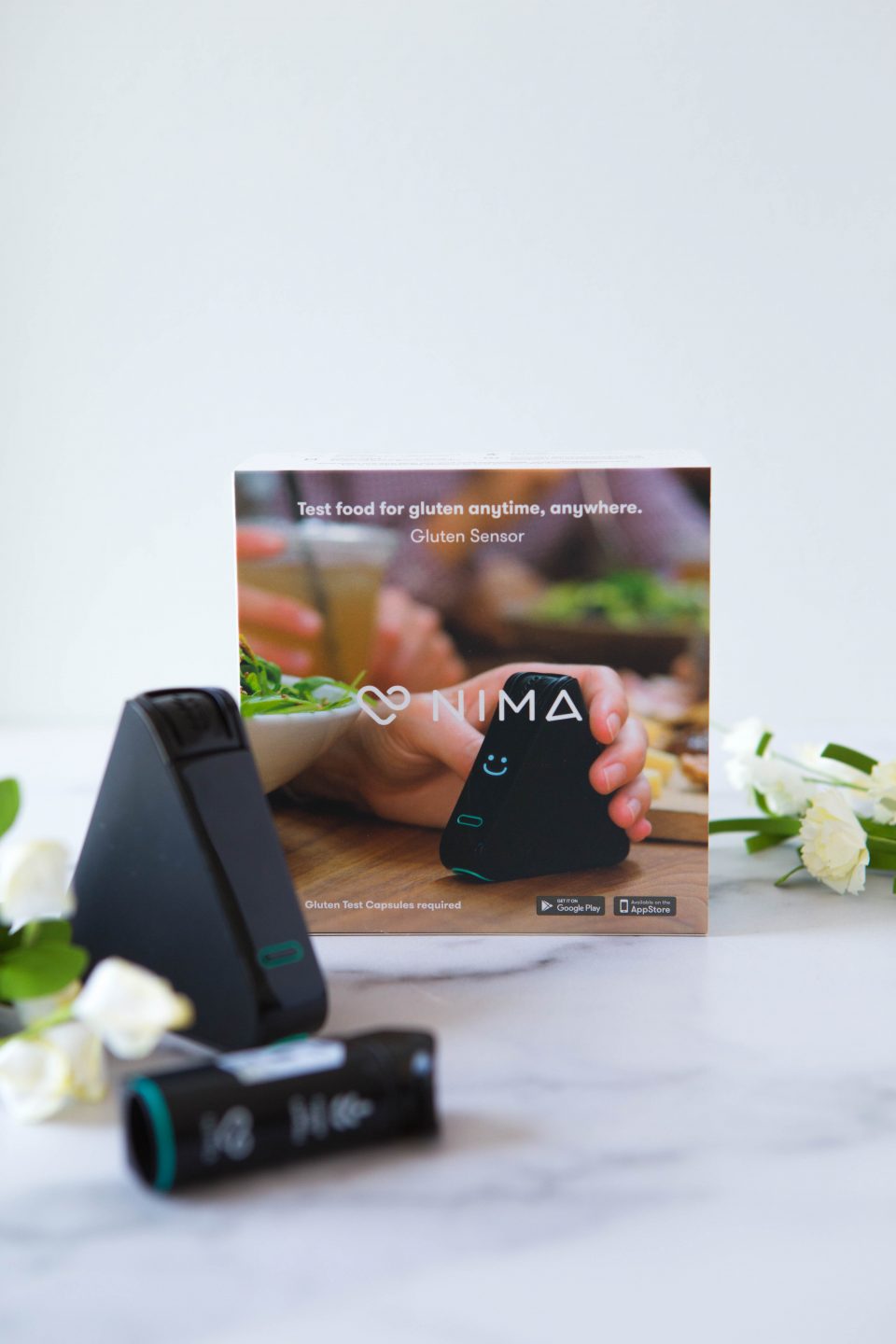
I think there are a lot of misunderstandings and falsehoods about how it works and people are simply believing that without doing their own research.
If you haven’t heard of a Nima sensor yet, I encourage you to visit their website and learn more about this very unique device that was created to help laypeople test for gluten in their food. I personally use the Nima Sensor when I am eating out at restaurants and when I travel. It has been an invaluable addition to simply trusting that restaurant staff is going to take care of me and my health.
Drumroll For My Guest Blogger…
I am so excited to have a very special “guest blogger” joining me for this article…my husband, Brian!! Brian has been the absolute most supportive person since the day of my Celiac Disease diagnosis. He was the first one to say that we are going to have a completely gluten-free kitchen at our house. He eats gluten-free when we go to restaurants. Brian is always willing get his hands dirty in the kitchen and create gluten-free meals with and for me. I also never hear any complaining from him.
Believe me, I realize how lucky I am.

He volunteered at the Nima booth and I did a cooking demonstration.
Brian is seriously one of the smartest people I know and he excels at (just about) everything he does. He loves science-y things. Good thing because I’m more of the creative type so we really balance each other out. He is also the one who researched and encouraged me to get my Nima sensor.
He wanted to share his thoughts and personal research about the device!
The remainder of this article was written by my husband, Brian!
Hey Everyone! I’m glad I can be here to share my thoughts about the Nima Gluten Sensor. I am trained as a Doctor of Physical Therapy so I am accustomed to critically reading studies in my everyday practice. Thinking about where a possible source of error could come in, how much to believe in the conclusion, and/or if there is something suspicious going on.
My wife and I use the Nima predominately when going out to eat. The Nima is not the only thing we rely on to make sure food is gluten-free. There are still certain precautions we take when going out to eat. Such as:
- Asking a ton of questions such as:
- How is the food prepared? Do they change their gloves, will they use a clean pan, are knives shared for spreading mayo on regular bread and/or do they use the same container for spreads?
- Is the grill surface shared with gluten containing items?
- Do they have a separate fryer for gluten-free foods?
- Do they use tamari instead of soy sauce?
- Is the staff well-trained on allergies and cross-contamination?
The Nima is an additional tool after first finding a restaurant that can handle our food safely. It’s not an end all be all. We also take specific steps when using our Nima Sensor to get the most out of the device, such as:
- Washing our hands before testing. And then using clean utensils to put the food into the Nima capsules.
- Using a small sample size and certain techniques for making sure we can get an accurate sample. For example, we try to take a piece of the food that would have touched a cooking surface. Or we take a sample along a cut line on a sandwich where cross-contamination could occur.
- We try to get a little bit of different parts of the dish. Each one-time use testing capsule is $5 so if we are using 4 capsules to test different parts of a dish, then that is an extra $20 added on to a meal. Not only that, but each test takes a few minutes to run so then everyone else will be done eating by the time the Nima is done testing.
- The capsules hold a pea sized amount of food, so we’ll take a few tiny bits from different areas of the plate allowing us to capture more samples from the entire dish. Or we’ll rub our sample across the majority of the dish to hopefully pick up anything else.
- Certain foods cannot be tested. For instance, fermented food (such as soy sauce) and hydrolyzed wheat protein which is gluten that has been broken down by enzymes is too small to be detected by any device. So that’s why you should always ask if you’re leary about ingredients. We understand this going into it so we don’t test those foods because we know we could get inaccurate results.
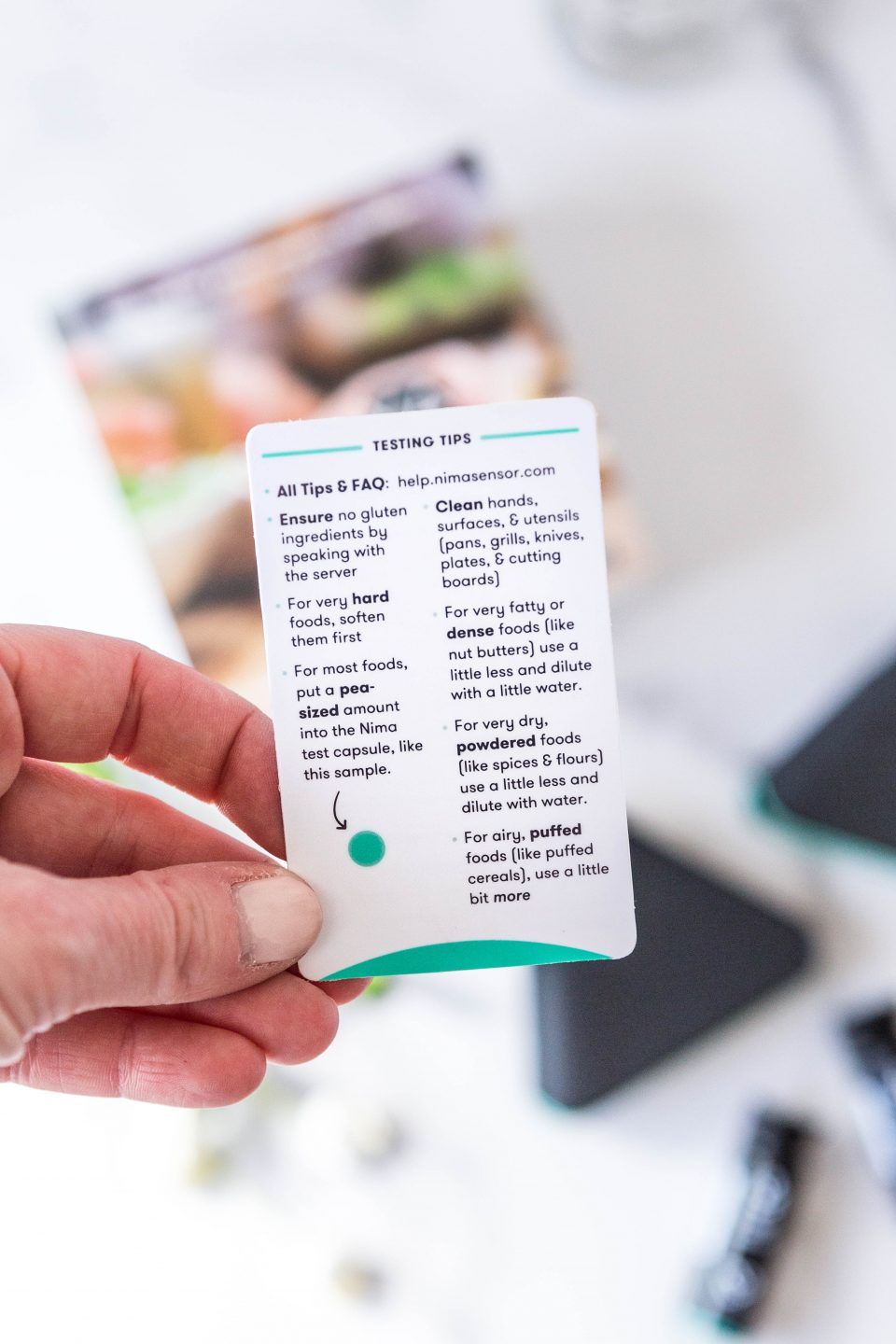
For the Nima, the amount of gluten needed in a dish at a restaurant to get a result that indicates gluten found is actually very small. Very small is still too much for someone with Celiac Disease.
Industry Standard
If you are part of the Celiac community, you are very familiar with measurement of 20 parts per million (PPM). Twenty PPM is the amount of gluten that the Federal Drug and Administration (FDA) will allow in food for it to be labeled “certified gluten-free”. This is the industry standard.
What is 20 PPM and how small is it?!?! It is VERY VERY SMALL!!!!
I decided to do a little at-home experiment with pepper to get an idea of what 20 PPM physically looks like. My scale at home only let me get 2.1 grams (roughly ½ teaspoon), but what I am trying to show is that about ½ teaspoon of gluten (in this case, pepper) dissolved in 26 GALLONS of water is what 20 PPM looks like.
Visualize that again. One half of a teaspoon dissolved in FIVE 5 gallon buckets is equal to 20 PPM. This is an extremely small amount.
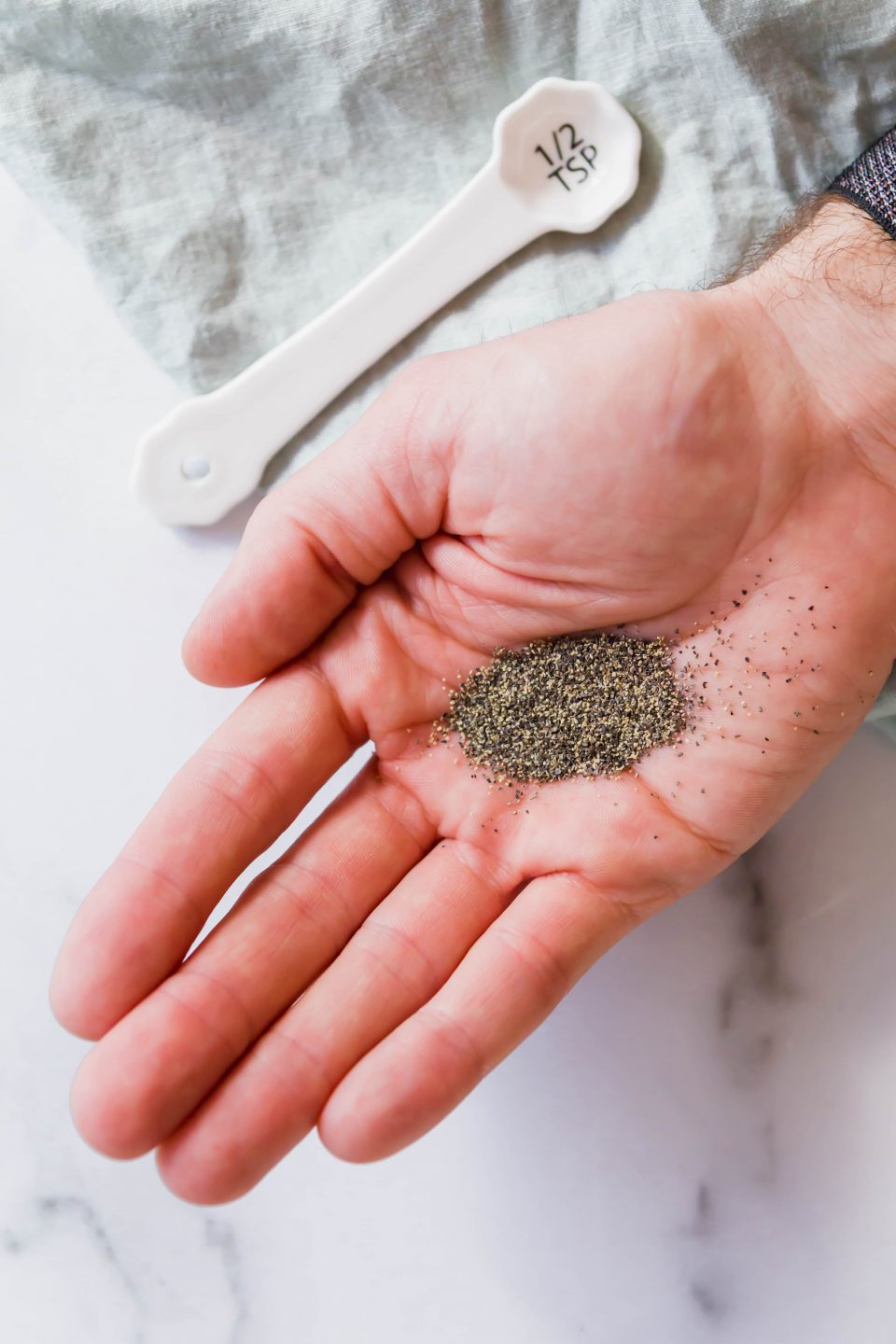
Another way to think of 20 PPM, is to take the amount of pepper in the photo above and divide it into 400 piles. If you wanted to consume 20 PPM of gluten, combine just one of those 400 piles of pepper with your food FOR THE DAY! That isn’t even spicy for a Minnesotan. 😉 Does that help you get an idea of how small 20 PPM is?
Check out this TED talk about 1 part per million… it will blow your mind.
Stances from Other Sources
When we hear people’s arguments about the efficacy of the Nima Sensor or saying it “doesn’t work” they typically site The Gluten Free Watchdog’s (GFW) personal research and opinions.
After about 100 Nima tests that I read on that site, the GFW’s stance on the Nima Sensor immediately had me thinking that something wasn’t adding up. My real world experiences are TOTALLY contradicting the GFW opinion. My thoughts are that they haven’t used the Nima Sensor in any real world capacity. Or perhaps they are bashing the product due to their financial interests.
You see, the GFW offers a service to consumers where they pay her to test for gluten in certain products. Putting a device in consumer’s hands that does something similar to her business model would affect her financial gain in her business. If a consumer can find out if something contains gluten why would they pay for her information? She blasts the Nima as a “gadget”. In real world use, however, the Nima is actually extremely helpful despite what she would like you to believe.
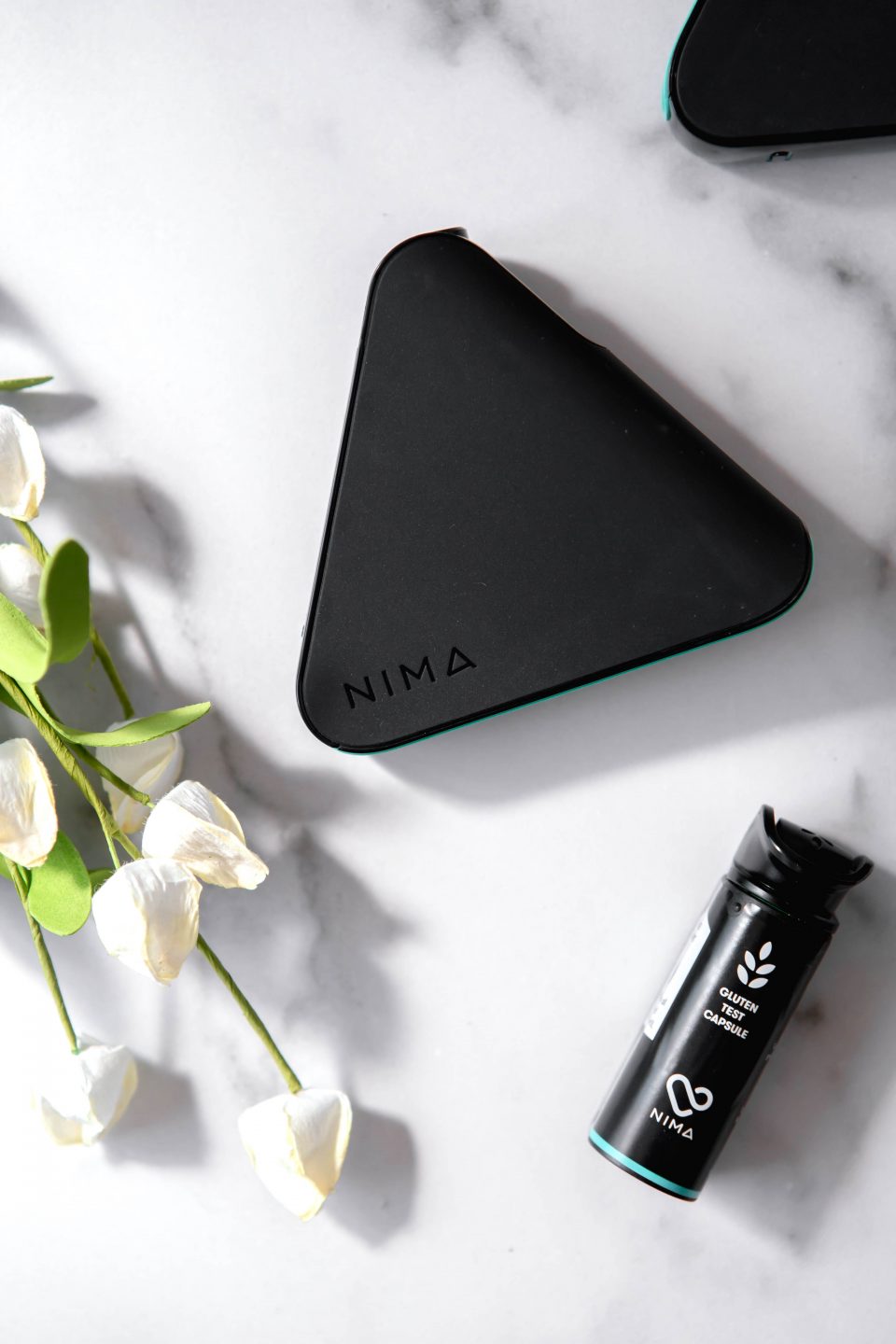
Gluten Free Watchdog is upset that the device is inconsistent in the amount of gluten that Nima can detect, not necessarily whether or not it is actually detecting gluten. She says that it detects below 20 PPM at about 45% of the time. And then according to their 3rd party research, food specifically prepared to have 5 PPM tested positive 34% of the time and prepared food testing at 10 PPM tested positive 56% of the time. Their conclusion is that the Nima device wasn’t 100% accurate with prepared food at 20 PPM because Nima detected gluten only 80% of the time.
Reading this response and their overall stance prompted me to read more of the GFW blog and to watch some of their Nima videos. GFW gave an example of sugar representing gluten on a cracker. Obviously, the crystals don’t cover the entire cracker and therefore she says Nima won’t detect it reliably. What about if you break a piece of the cracker, rub it all around, get some of this on the cracker, some of that on the cracker, and then test it? Pretty good chance it will detect gluten.
Another argument that comes up quite often is that the FDA does not regulate this device. Of course they don’t. It’s not a medical device. You know what else the FDA doesn’t regulate? The fact that companies can slap a gluten-free label on whatever they want. The FDA doesn’t do any follow-up or do testing of products to make sure they actually are 20 PPM or less. There are outside companies that do the certification, but it’s certainly not the FDA doing that.
Some people just don’t want to like it, so they’ll find any reason not to.
Is the Nima accurate?
We are talking minuscule amounts of gluten here. You only need a needle in a haystack for a “gluten found” result on the Nima Sensor. Basically you can get one little bit of gluten in your sample and it will test positive. This is really all that matters to me. I don’t care at which level it’s detecting gluten…because it’s still gluten. If it comes back positive, whether it’s 2 PPM or 20 PPM, we are not going to eat it. End of story.
Having the Nima is basically the only way to find out this information for yourself!
I wonder about the actual PPM of gluten in a prepared gluten-free dish that we have tested positive with our Nima Sensor. When we get a ‘gluten found’ reading, the level must actually be relatively high. More like 80ppm or more. If that is the case, then Nima would test correct virtually 100% of the time.
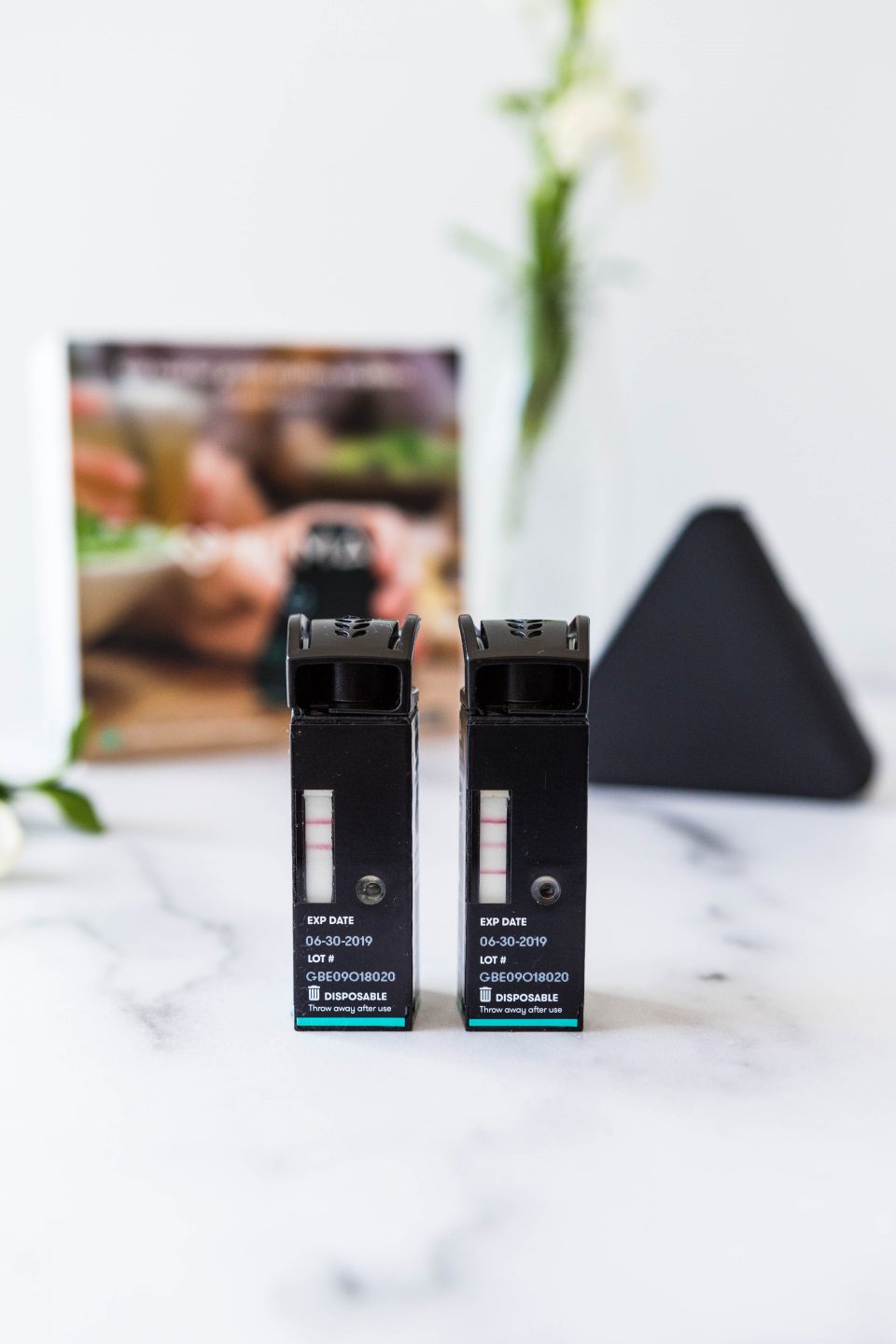
From what I have read, the ability to detect the exact PPM of gluten is not very high, no matter the type of testing device. The same sample could come back with 12 PPM +/- 5 and another with 23 PPM +/- 4. That is impossible if 100% accurate! My wife wants to know if there is possibly gluten…ANY AMOUNT OF GLUTEN. As mentioned before, with Celiac Disease, she doesn’t care if it is 1 PPM or 100 PPM. It’s still gluten.
I have also read on blogs or on gluten-free forums that people won’t ever get a Nima because they heard you can get false positives and false negatives. How do they know if it’s a false positive or false negative?!? Symptoms? Gut instinct? Purposely eating gluten? Those are not ways to know for certain. There are so many variables that go into the way you feel. It’s amazing how many personal opinions and bad information is out there.
Our Perspective About The Nima Sensor
Our own anecdotal evidence proves the Nima Sensor has been a savior numerous times over the last year and a half since we purchased it. This device provides an extra step of precaution when eating out and traveling.
Have you ever been to a restaurant where they have a gluten-free menu and looking the whole time at the kitchen having no idea how the food is prepared? It’s all a crap shoot, really. After speaking with the wait staff, manager, and/or chef you still have a bad feeling that something fishy is going on? Perfect time for the Nima Sensor. Then the Nima comes back and says there is gluten and you think “Wow, I totally would have eaten that without having any clue.” At least when you have a ‘gluten found’ reading on the Nima there is concrete evidence.
A restaurant can make their allergy protocol sound fantastic but if there is a weak link in the chain then it all fails. Is the supplier providing something that is really gluten-free? Does the kitchen really know if the ingredients are gluten-free? Did the wait staff put the ticket in correctly? Did the chef prepare the dish without realizing it was an “allergy” protocol order? Or maybe the runner “contaminated” the dish? Who knows where the issue lies.
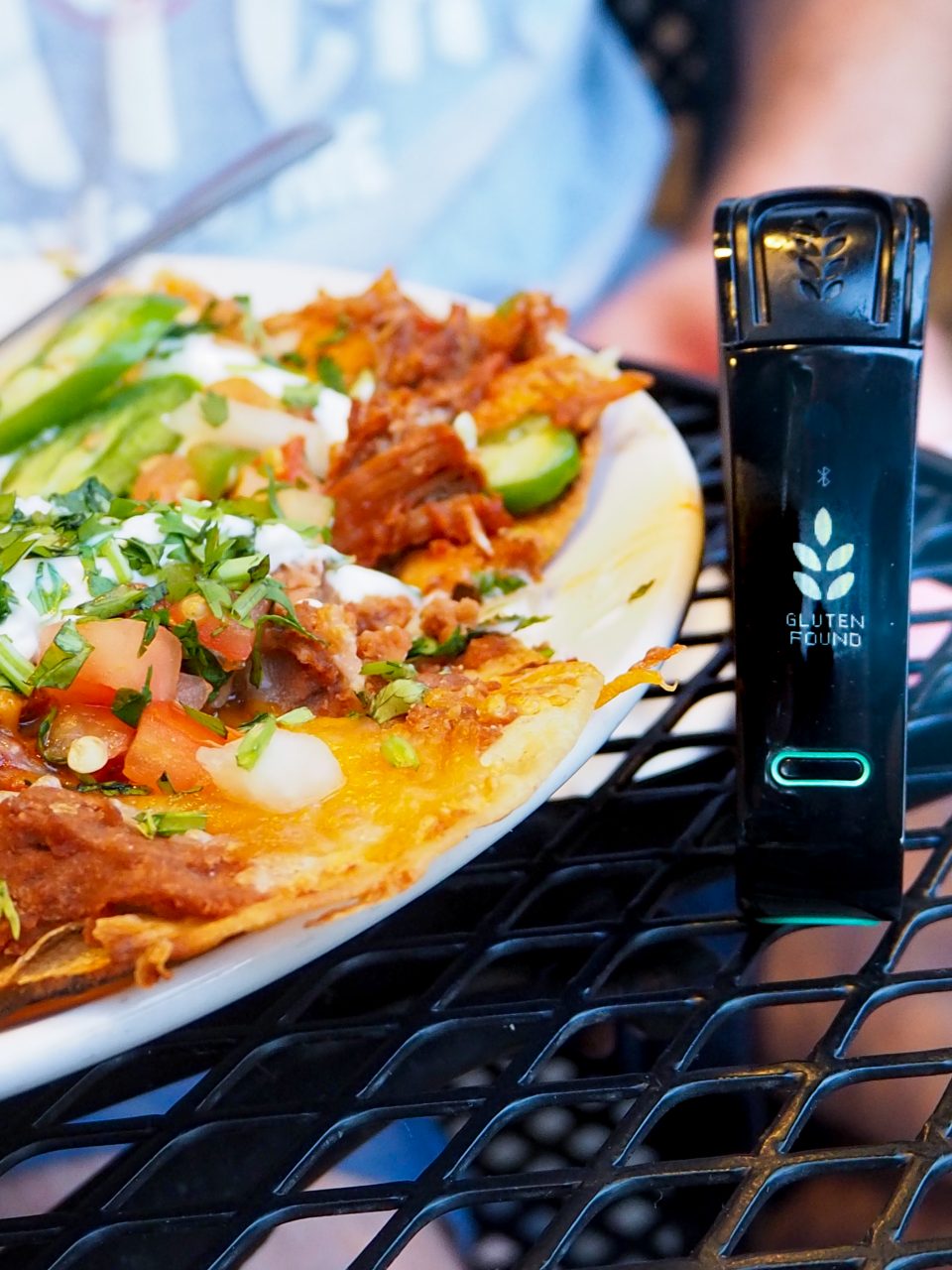
Bottom line: it’s really hard to eat out with Celiac Disease and I am confident the Nima Sensor has helped my wife be able to enjoy going out with friends or for special occasions and not feeling like she’s left out.
What our results show
Kari has a running list in another blog post of the restaurants and dishes we’ve tested in the Twin Cities. We like being able to reference this list so we can decide if we’re going to go back there or not. Things can change at anytime: new wait staff, new chefs, new ingredients, different supplier, someone having a bad day, someone not educated on safety, or someone who just doesn’t care. The reason doesn’t matter if something tests with gluten found.
Some restaurants will never receive our business again simply from our own personal experiences: the results using our own Nima Sensor. Nima also has an app the device is linked to so that other users (even non-users) can see where and which dishes have been tested and the results.
We do have a couple restaurants we eat at that have at least 99% safe ingredients and that’s really the only instance we don’t test.
A Quick Example
Restaurants claim to have gluten-free menus and talk the talk but don’t deliver. Having gluten found by the Nima on 5 different dishes is a great way to know the place is not safe. My wife was at Chick-Fil-A, a restaurant that has a great track record for their gluten-free protocol. She ordered the grilled chicken sandwich on the gluten-free bun and it came out really quick, a little too quick. Situations like this make us VERY suspicious that they aren’t following the apparently strict allergy protocol.
Yep, the Nima tested it with gluten found. She tested it again because she thought maybe she did something wrong on her end (like gluten on her hands). Gluten found again. The response from the manager is a different story for a different day. But after making a new sandwich, and probably following the correct allergy protocol the new sandwich tested OK. Just like the 10 times before.
If you don’t have a Nima Sensor and are contemplating getting one, then think about what you are relying on now? Probably nothing. Right? The Nima Sensor is just another added level of security when eating out.
There are restaurants that test fine every single time, like Chick-Fil-A. What if we would have not tested because it’s been “fine” in the past. Or not been able to test because she didn’t have a Nima Sensor. She would have consumed gluten that day at Chick-Fil-A, I’m sure of it. The Nima provides an extra layer of knowledge and safety that cannot currently be found in any other capacity.
Our Own Personal Opinion
We are not basing every decision on the Nima. It’s just another tool in our toolbox. Eating out is very important to us and the Nima helps to make that possible without getting sick.
According to the tests that we have done at restaurants and on products at home, and then linked on the Nima app on our phone, we’ve tested about 150 times so far. So we feel like we’ve gotten a good test base for making our decisions and especially for continuing to use it.
Practically speaking…the Nima is AWESOME! There is just a feeling you get when going to a restaurant that says they have gluten free items, speaking with the wait staff, manager, and trying to visually see the kitchen as much as possible and you still have a feeling in your gut that this won’t turn out well. If you get that feeling…Nima confirms with the dreaded “gluten found” reading. Sometimes when eating at a place that seems to have their act together, the Nima comes back with gluten found. If this device wasn’t used while eating out… my wife wouldn’t be as safe as she is.
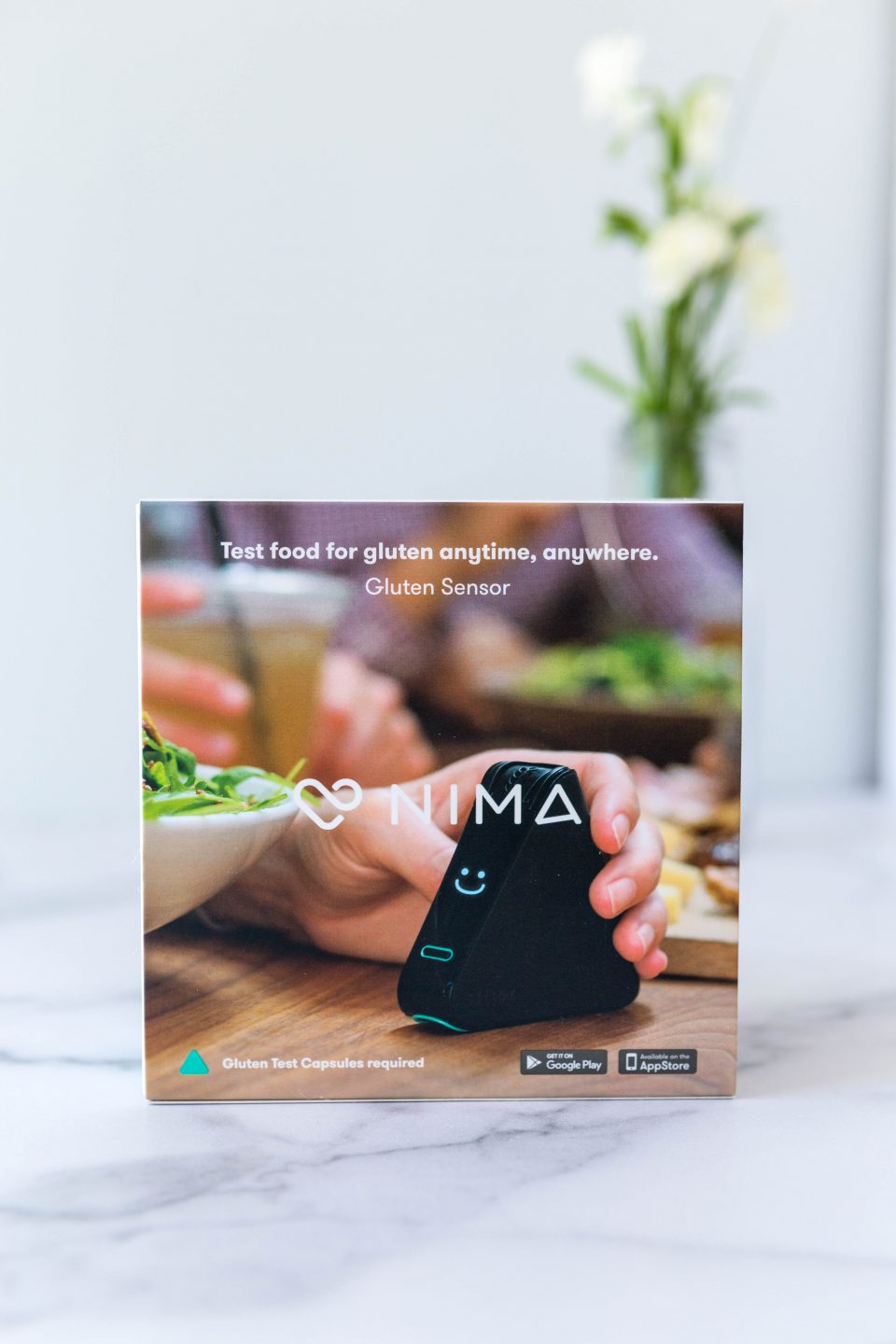
Is it 100% accurate… No, but pretty darn close. Will it keep you safe 100% of the time… No, but pretty darn close. The Nima sure is a lot more safe than just trusting staff at a restaurant knows if every ingredient in a dish is safe and that cross contact has been eliminated. Is the device accurate for eating out…we definitely think YES!
Don’t get me wrong the GFW has her place. Testing products that are used at home is very important. Unfortunately, not every batch, facility, and circumstance can be tested for gluten. We need to all make the more educated decision on ingredients, food preparation, and restaurants that are safe. The Nima Sensor helps us make those decisions.
Final Thoughts
The Nima Sensor is an invaluable tool that in my eyes adds one more level of gluten detection and we just won’t leave home without it.
P.S. We absolutely do not receive any discounts or free products from Nima. We are real-life users that believe in the product. I have NEVER talked with a Nima user that wasn’t happy with their purchase (though I only personally only know about 8 and, admittedly, that is a small sample size).
I would love to hear if you have a Nima Sensor and your own personal thoughts on it!
Click on the image below to PIN this article!
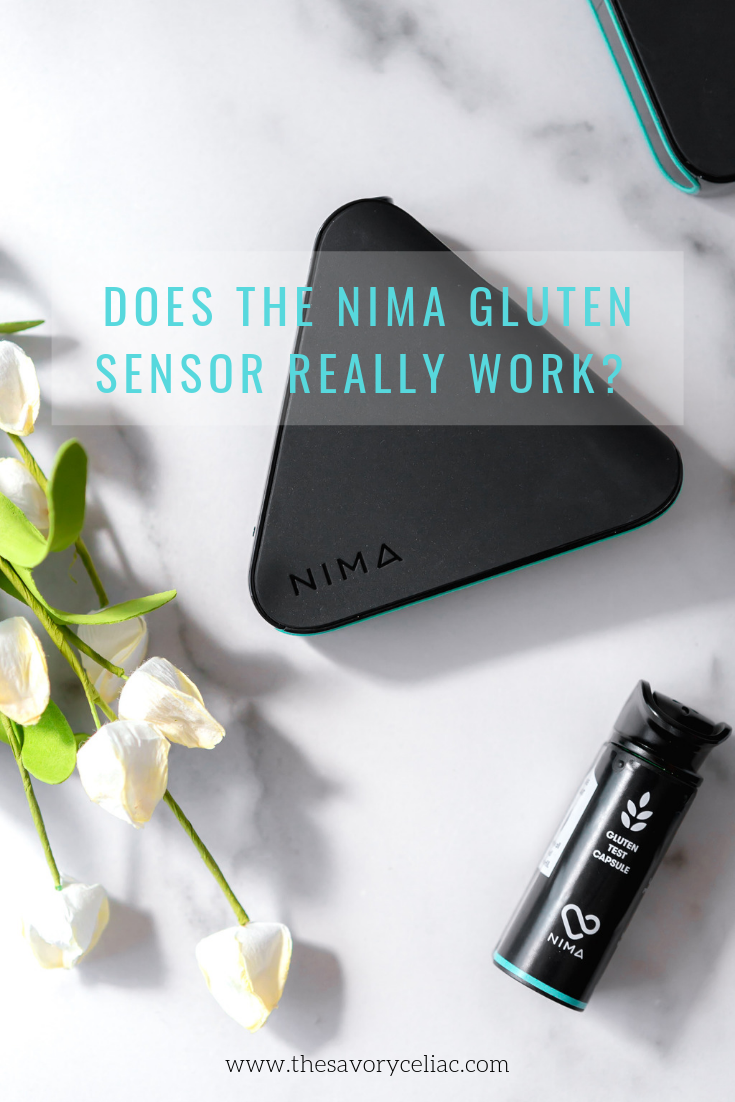

I would like to know how you handle specifically if a dish tests positive for gluten. What do you say to the restaurant staff and how has that gone over? I’m considering one for my college bound daughter. Thank you!
Hi Kelly!! First, I am not sure if you heard or not, but the capsules for the Nima are no longer available and we don’t know if/when they will be available again…if ever. There is a Facebook group called Nima Sensor Users and I would highly suggest you join! There is a lot of information about this issue over there. It is very disappointing because I really do love and trust my Nima but I don’t recommend you buy the device quite yet if you can’t get the capsules…
But if you’re still interested to know how I handle it in a restaurant I usually start by going to restaurants that have some reputation for being safe/safer (the Find Me Gluten Free app is my go-to). Then I tell the wait staff when I’m ordering that I have my device with me and that I will be testing it. If it comes back with gluten found then I will send my dish back. Period. I’m not saying that as a threat, but just being honest that I won’t eat it and that I won’t be paying for my dish if I can’t eat it. I usually ask to speak with a manager, explain the device and what it does. If gluten is found I try to troubleshoot with that person what ingredients were used, how the food was cooked, which utensils were used, if it was on a shared cooking surface, etc. 9/10 times they offer to remake it for me. If they do offer that I usually give them a chance. This can take a while though and then by the time the food is cooked and I test again and am (finally) able to eat, then everyone else at the table is already done. So sometimes it’s not even worth it for me. This also goes if I’m going to a quick service restaurant.
That’s why I pack snacks! Always! And if my dining partners are going to a restaurant that doesn’t accommodate gluten-free and Celiac eaters then I eat before hand and just have a drink so that I can still be part of the fun. I do recognize this might be harder for a college student though. 😉 If you have more questions or if I can help your daughter in any way please reach out!!